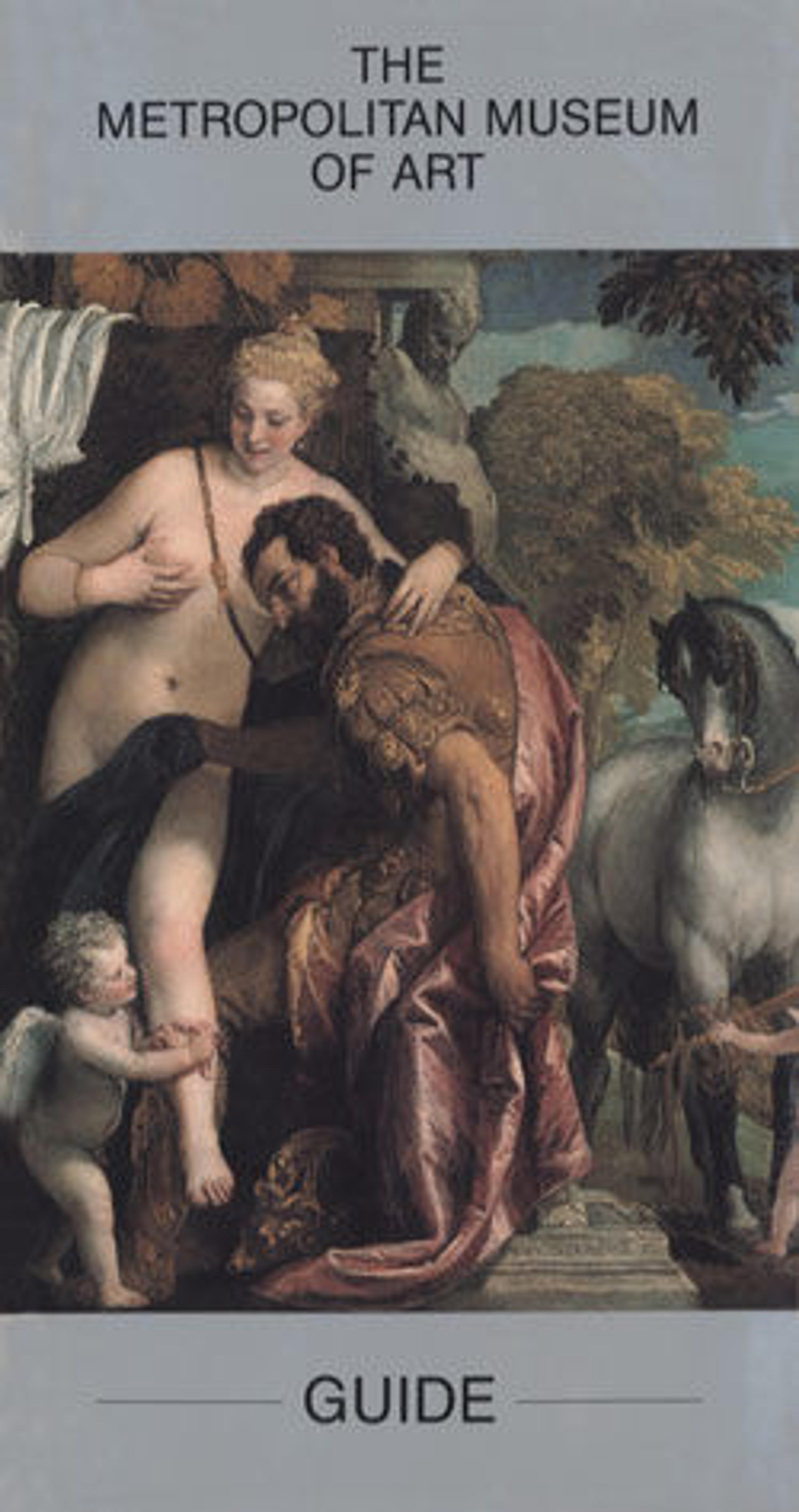"Yazdegird I Kicked to Death by the Water Horse", Folio from a Shahnama (Book of Kings)
The legendary death of the Sasanian king Yazdegerd I–who was said to have been kicked by a horse that magically emerged from a spring–is charmingly depicted in this leaf from a dispersed manuscript of the Shahnama (Book of Kings) of Firdausi, one of a few codices of small dimensions. The attribution is uncertain either to Iraq or Iran in the Ilkhanid period. The decoratively curving tree and the grassy verge of the groundline, which rings the water, are traditional; the funguslike growths are derived from Chinese art and the costumes are Mongol. The gestures of the figures at the left register astonishment and dismay.
Artwork Details
- Title:"Yazdegird I Kicked to Death by the Water Horse", Folio from a Shahnama (Book of Kings)
- Author:Abu'l Qasim Firdausi (Iranian, Paj ca. 940/41–1020 Tus)
- Date:ca. 1300–30
- Geography:Attributed to Northwestern Iran or Baghdad
- Medium:Ink, opaque watercolor, silver, and gold on paper
- Dimensions:Painting: H. 2 1/8 in. (5.4 cm)
W. 4 7/8 in. (12.4 cm)
Page: H. 14 in. (35.6 cm)
W. 10 13/16 in. (27.5 cm)
Mat: H. 19 1/4 in. (48.9 cm)
W. 14 1/4 in. (36.2 cm) - Classification:Codices
- Credit Line:Cora Timken Burnett Collection of Persian Miniatures and Other Persian Art Objects, Bequest of Cora Timken Burnett, 1956
- Object Number:57.51.33
- Curatorial Department: Islamic Art
More Artwork
Research Resources
The Met provides unparalleled resources for research and welcomes an international community of students and scholars. The Met's Open Access API is where creators and researchers can connect to the The Met collection. Open Access data and public domain images are available for unrestricted commercial and noncommercial use without permission or fee.
To request images under copyright and other restrictions, please use this Image Request form.
Feedback
We continue to research and examine historical and cultural context for objects in The Met collection. If you have comments or questions about this object record, please contact us using the form below. The Museum looks forward to receiving your comments.
